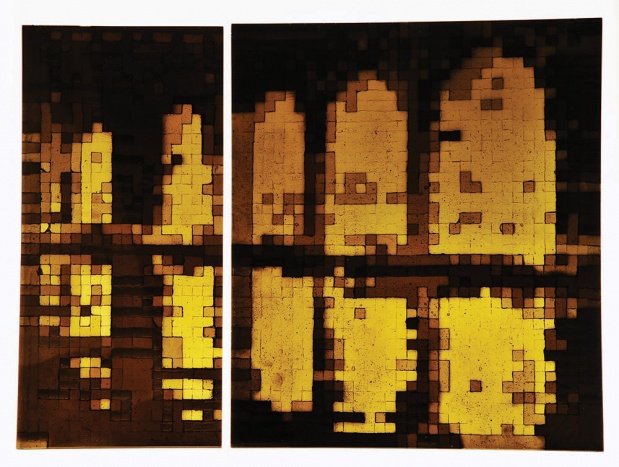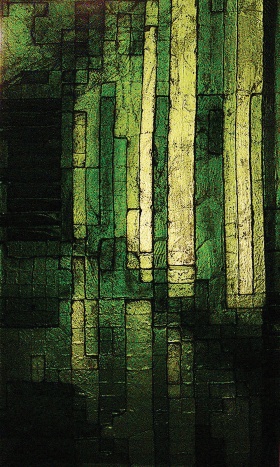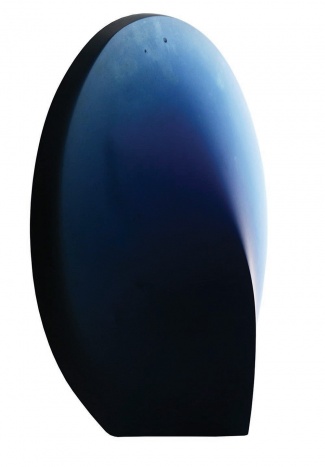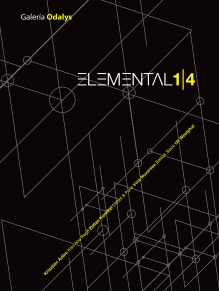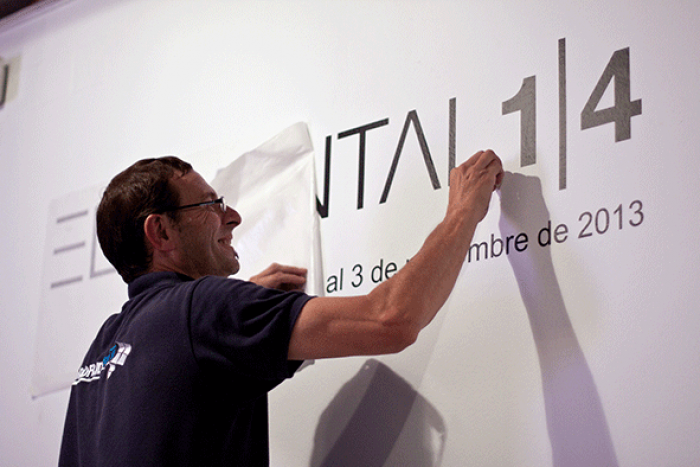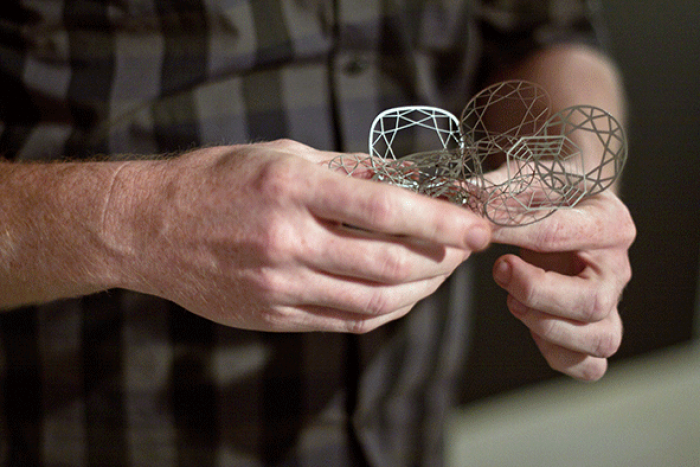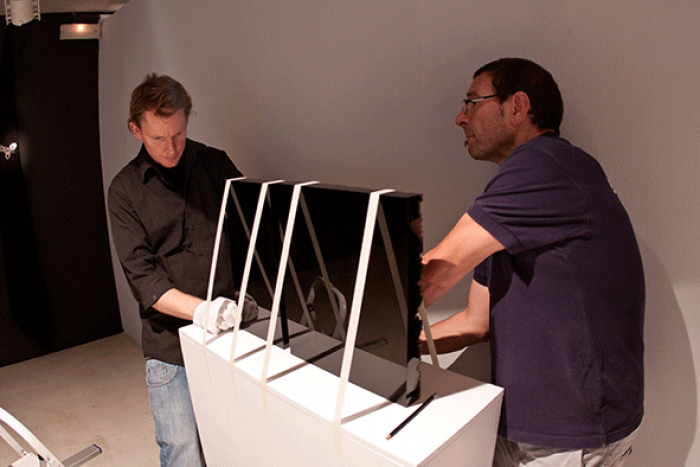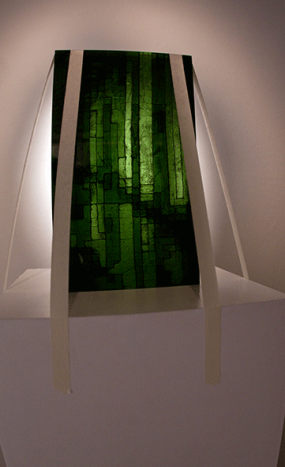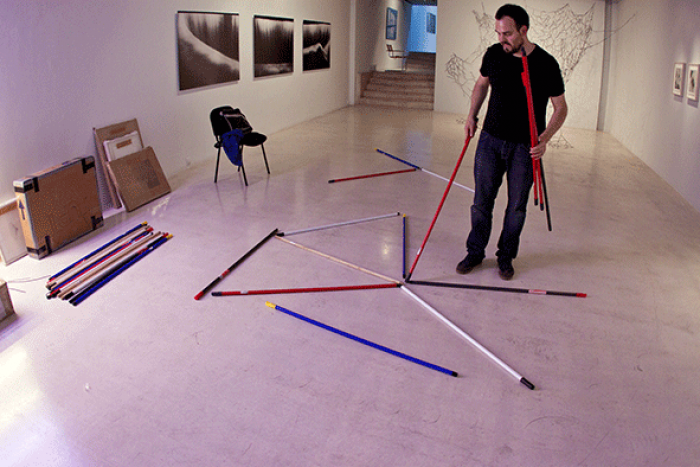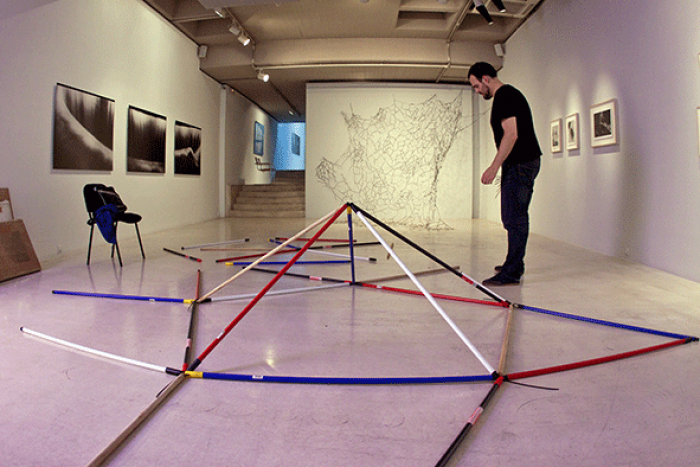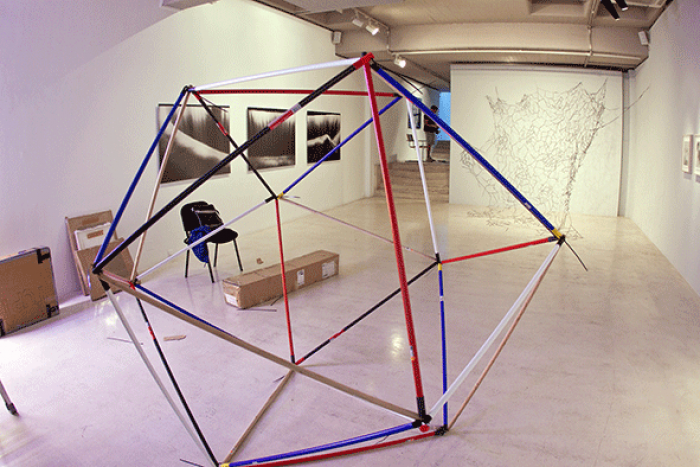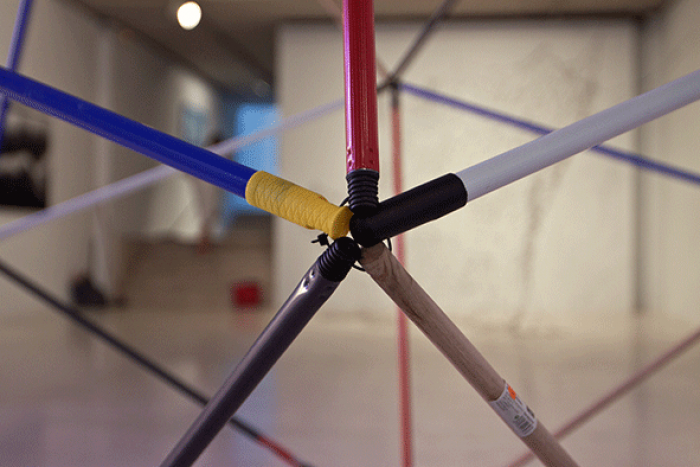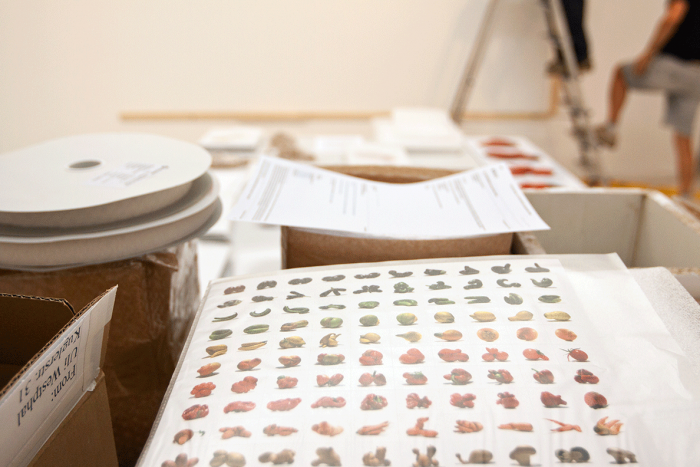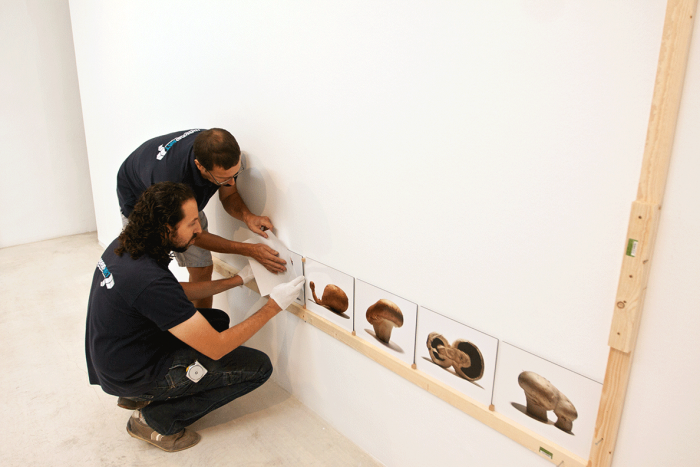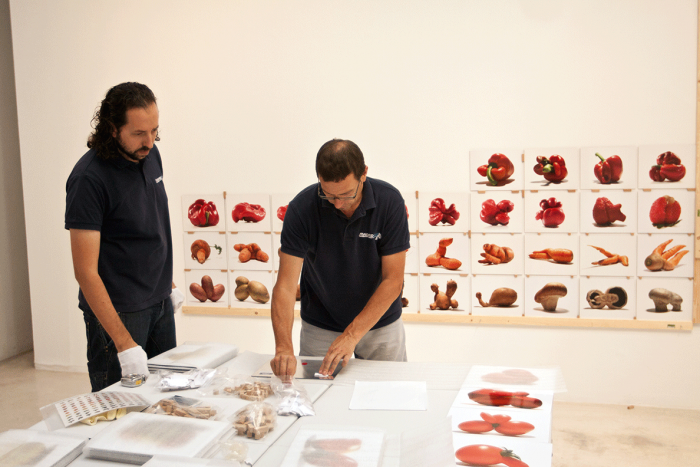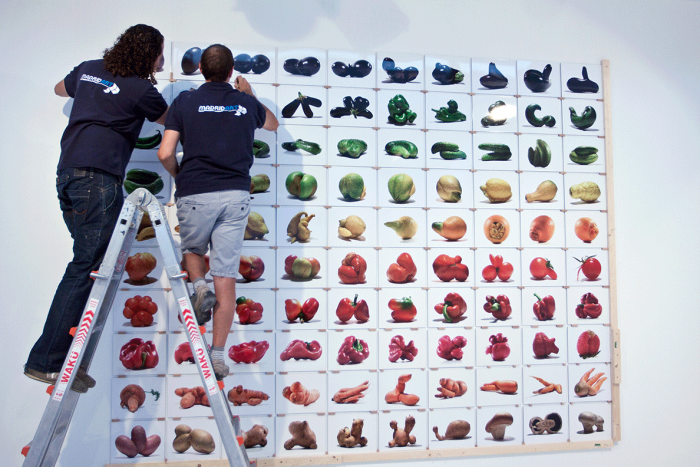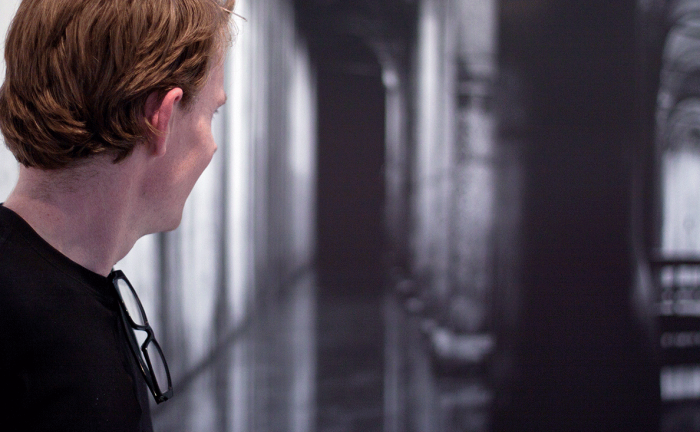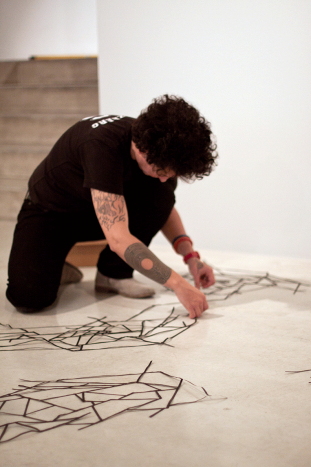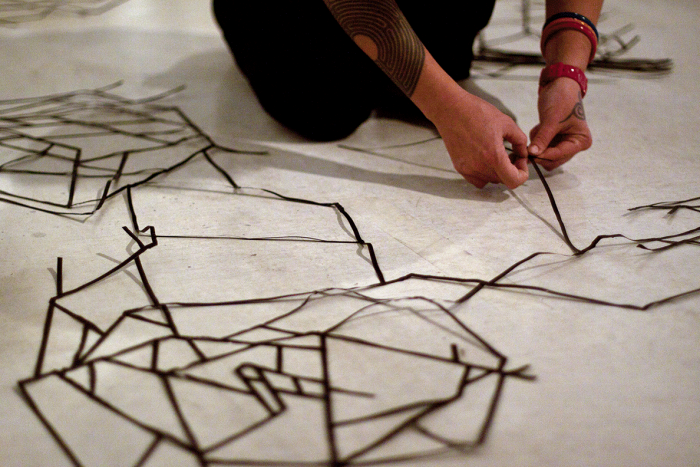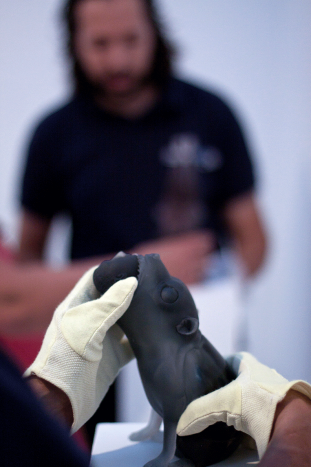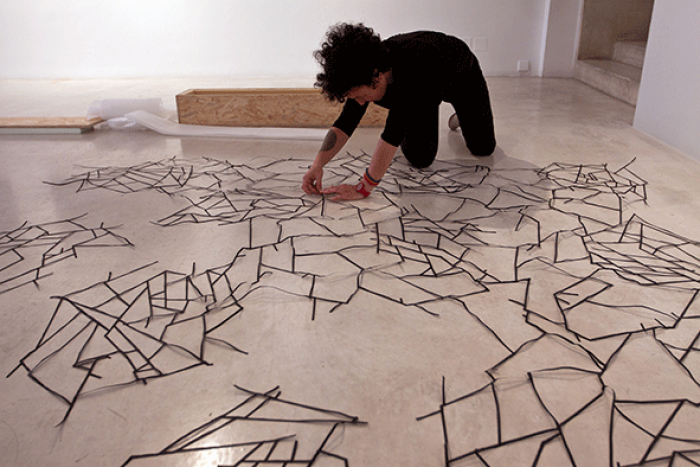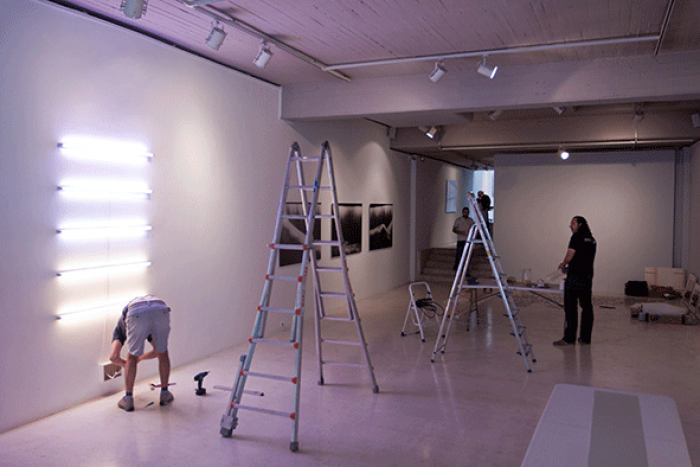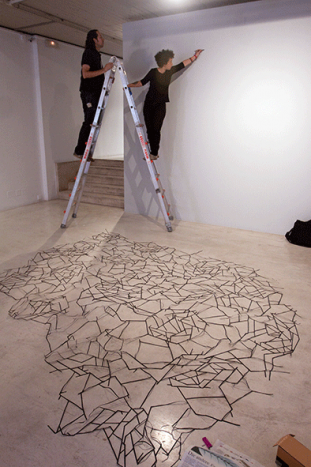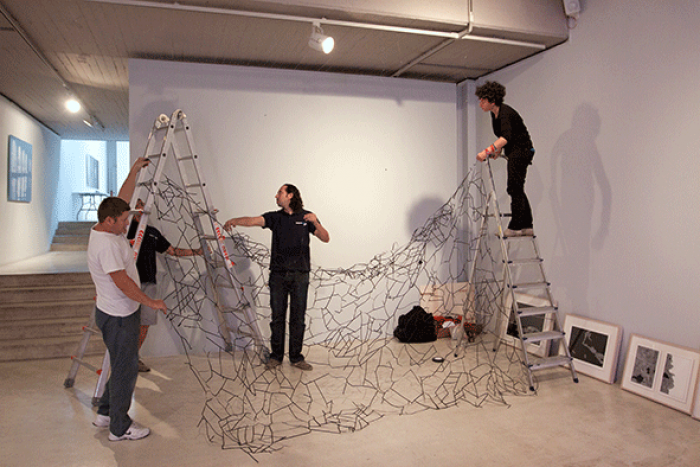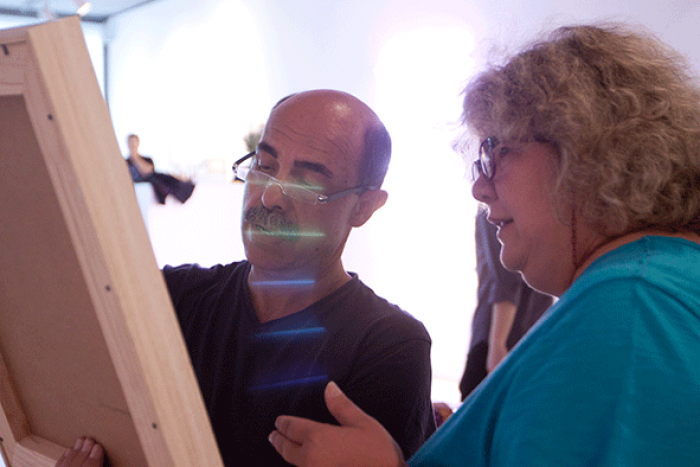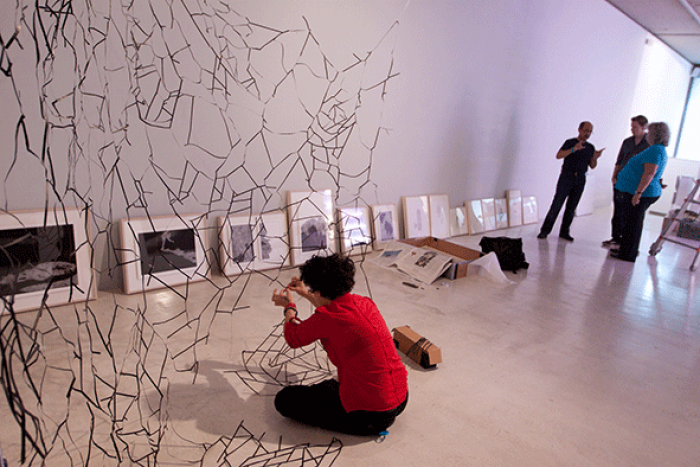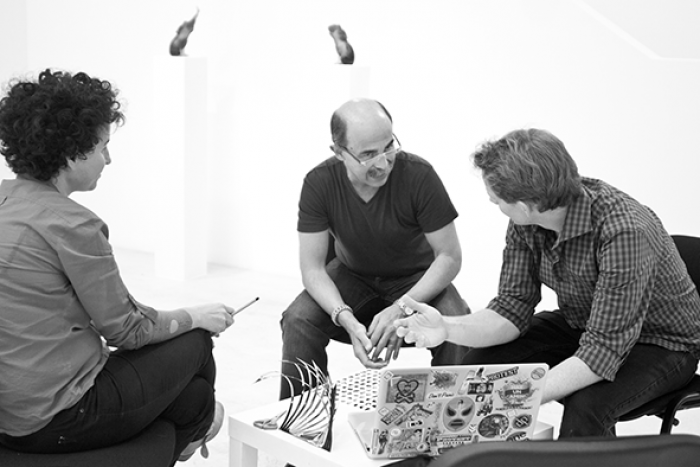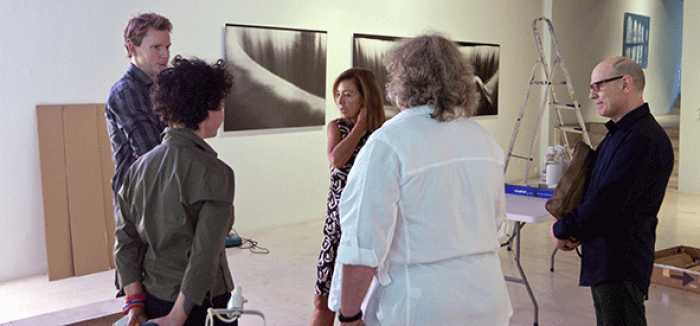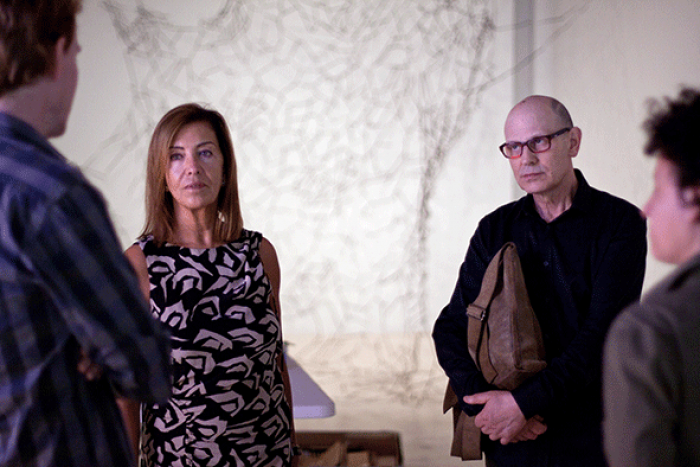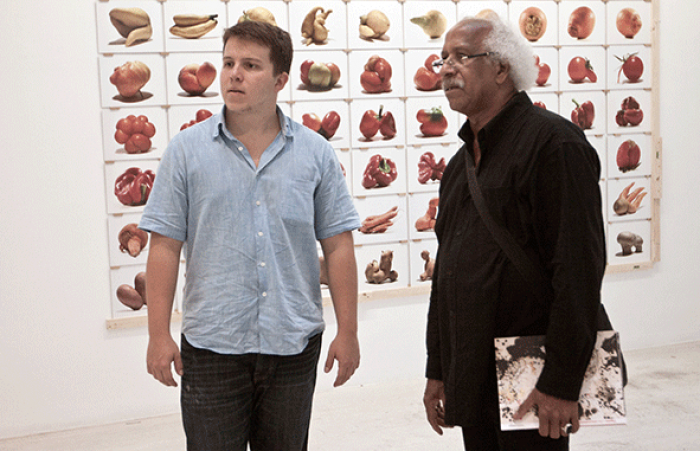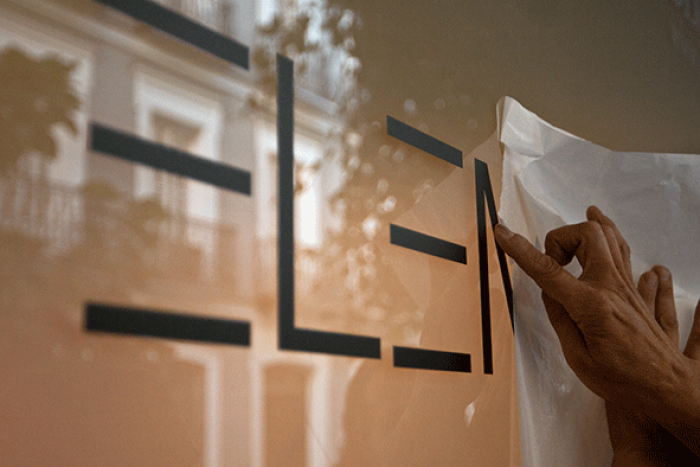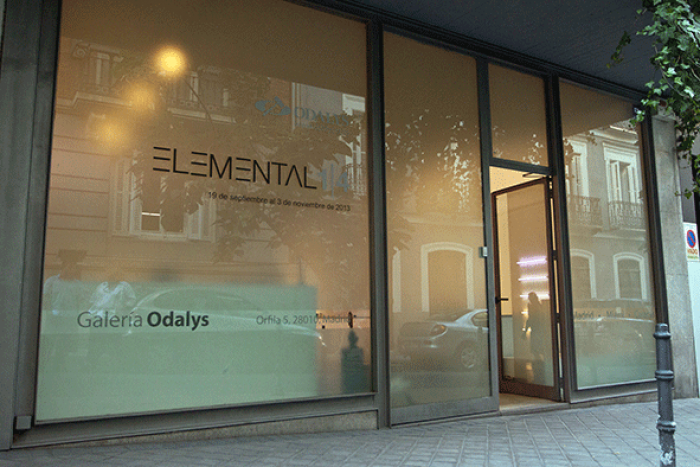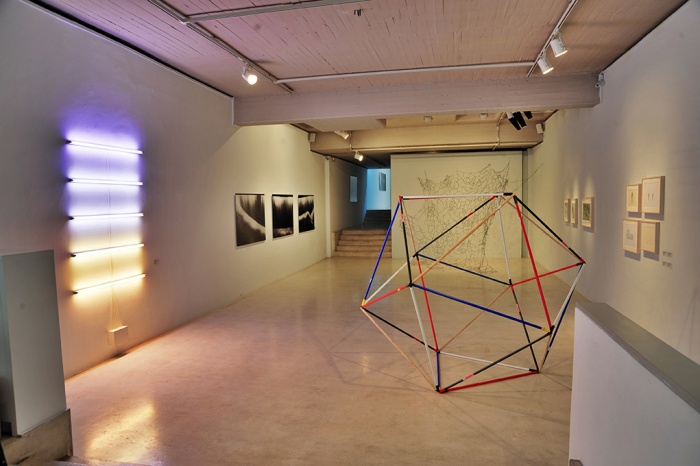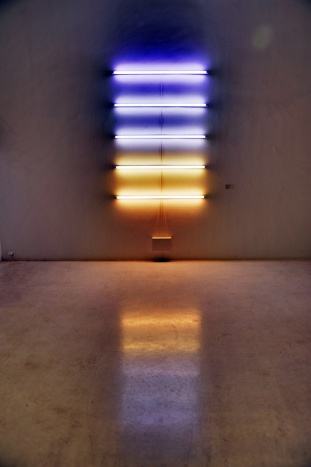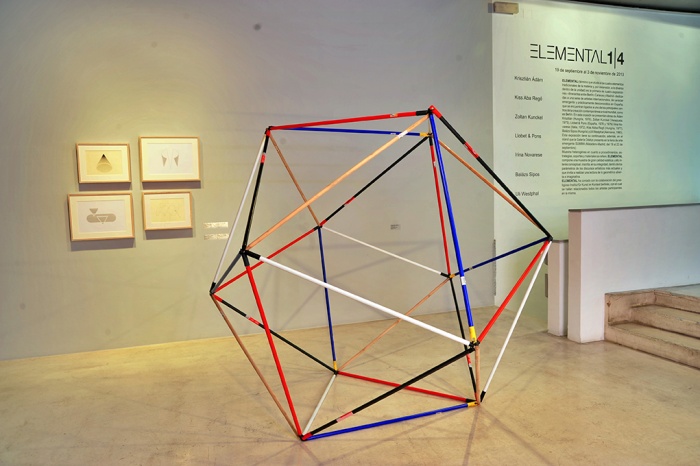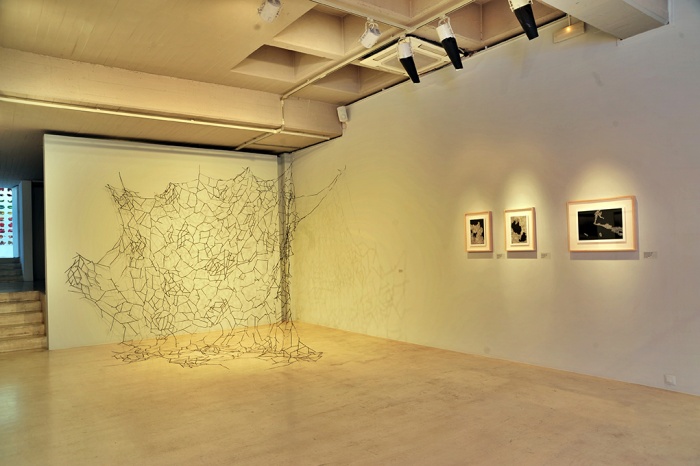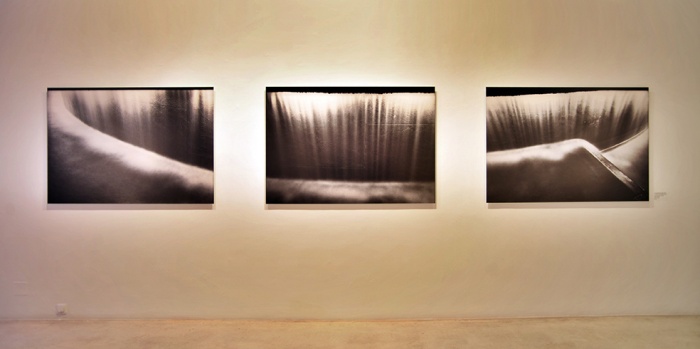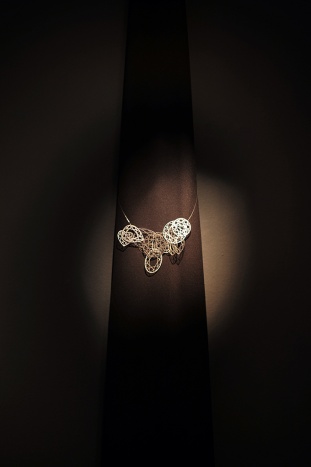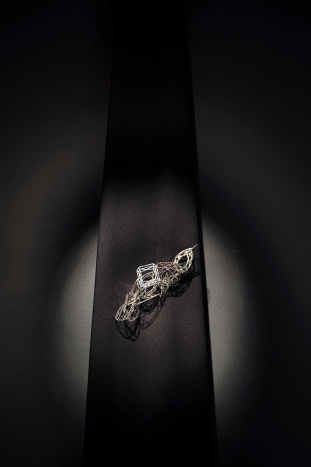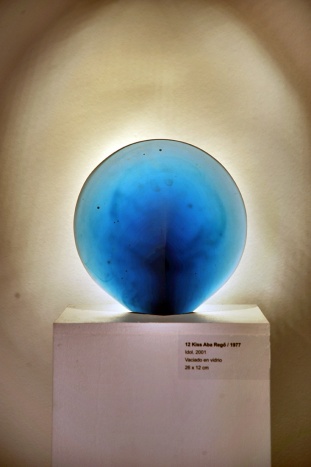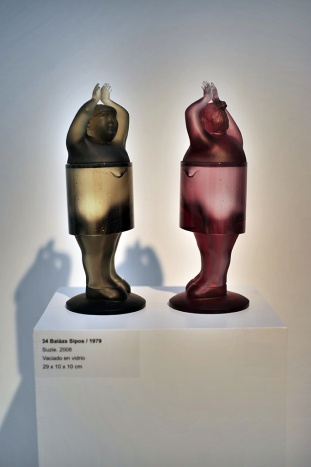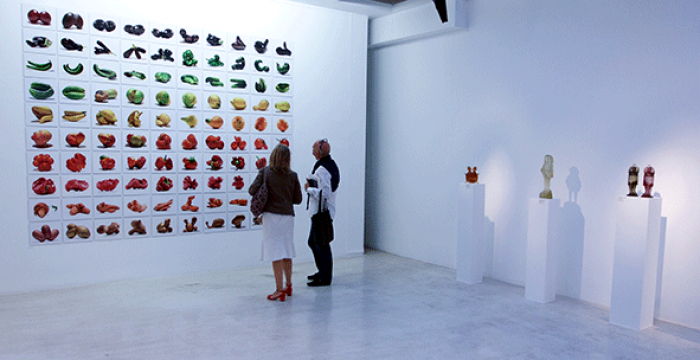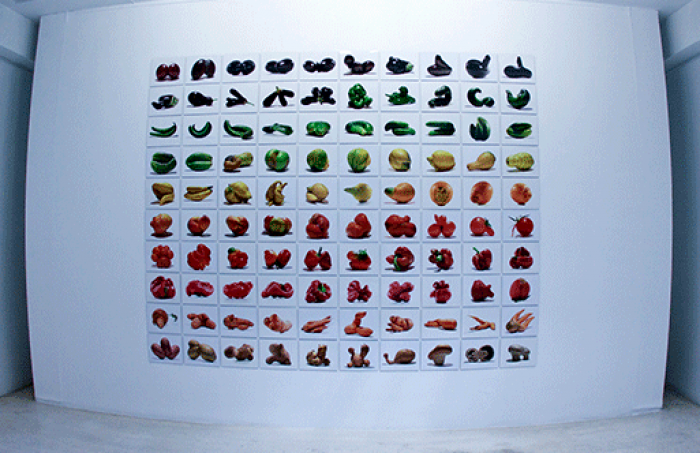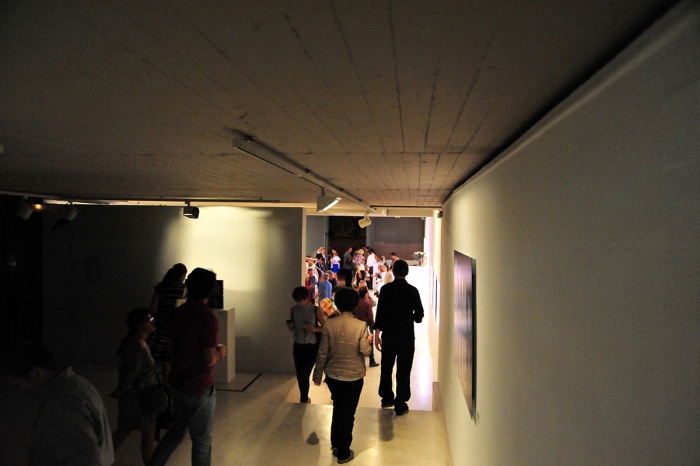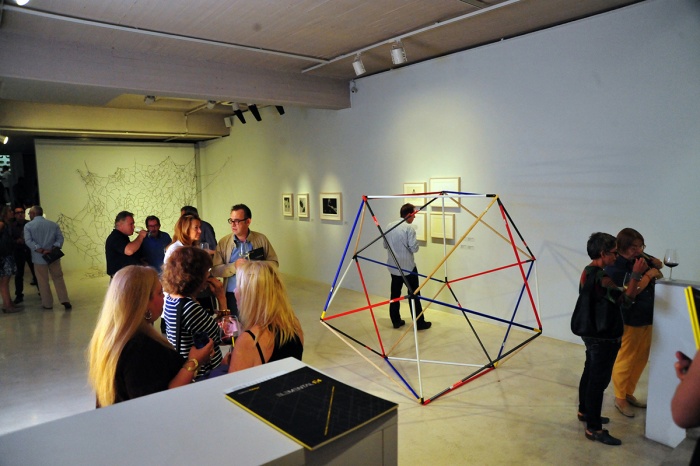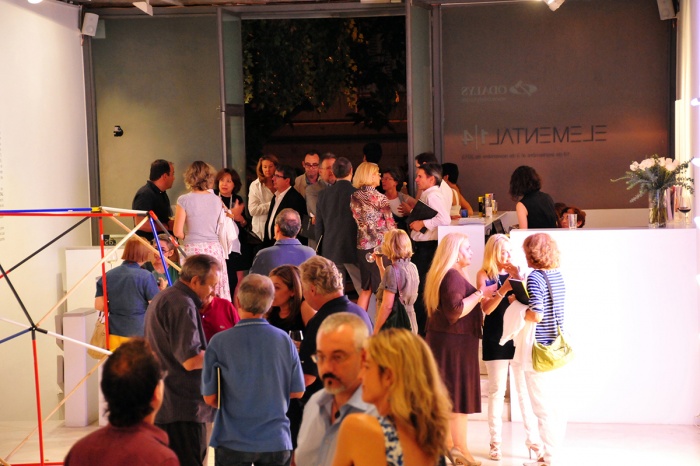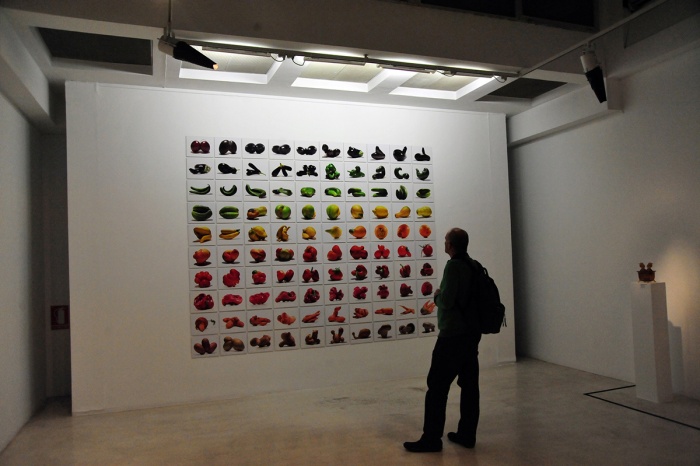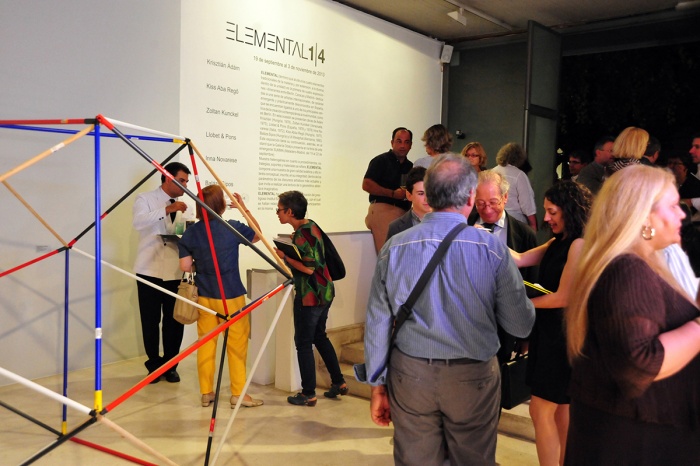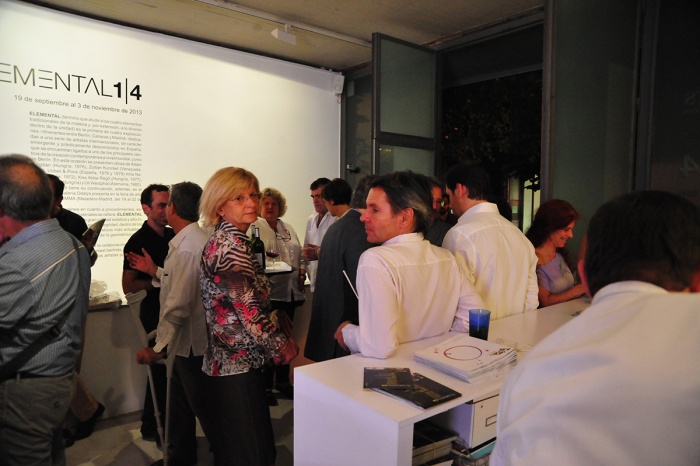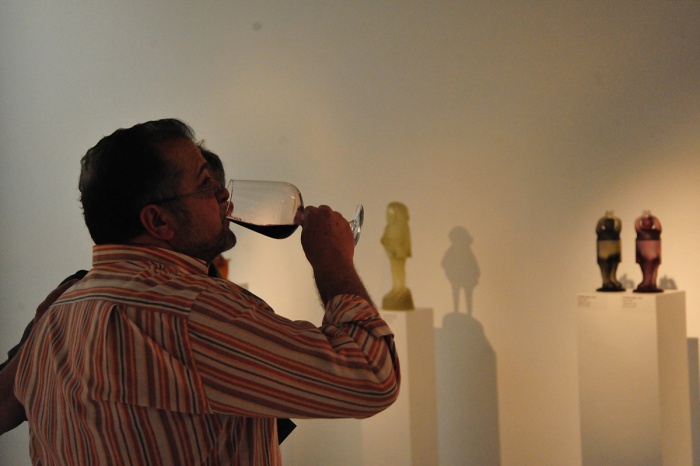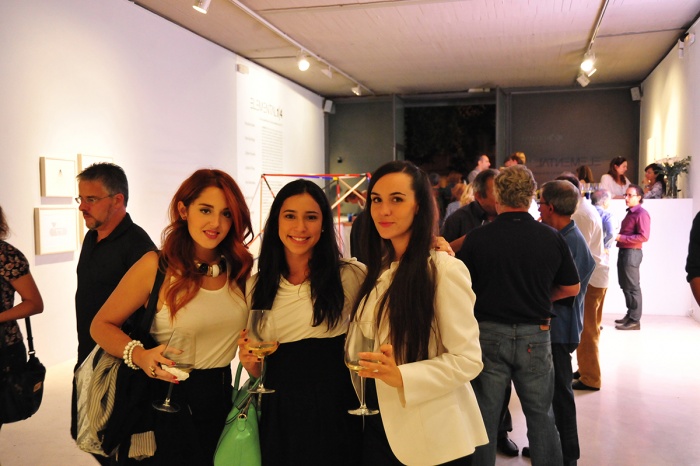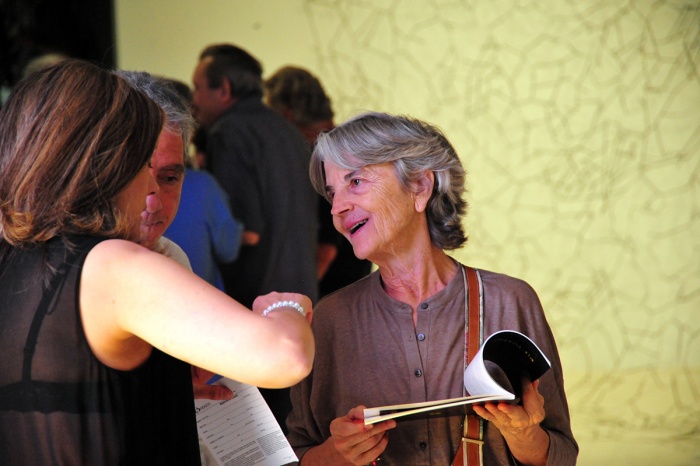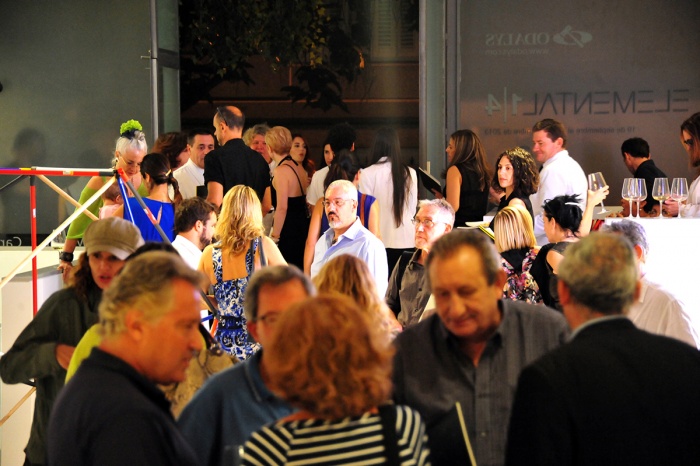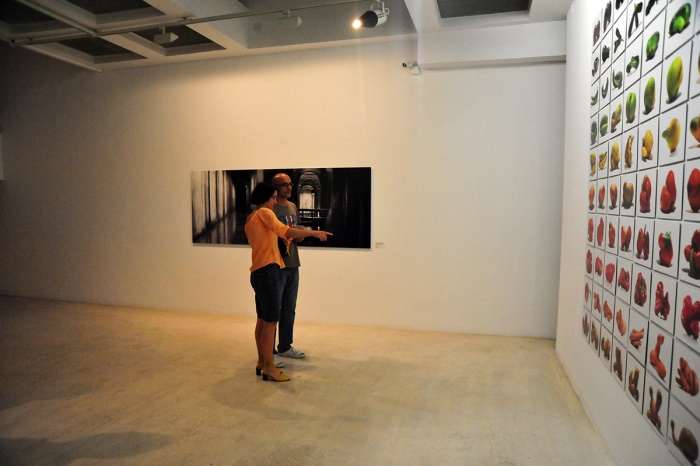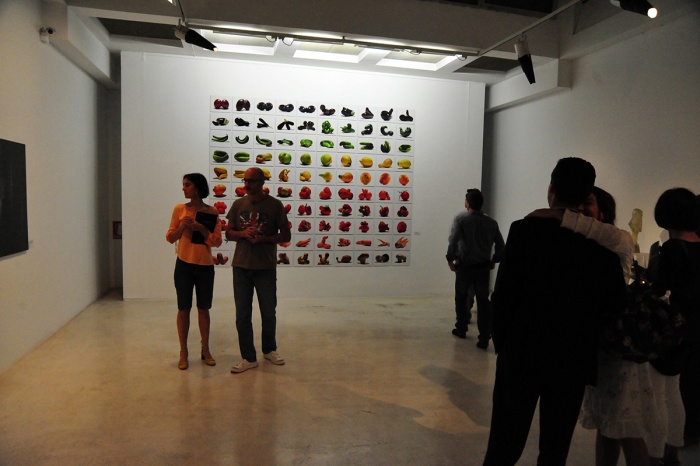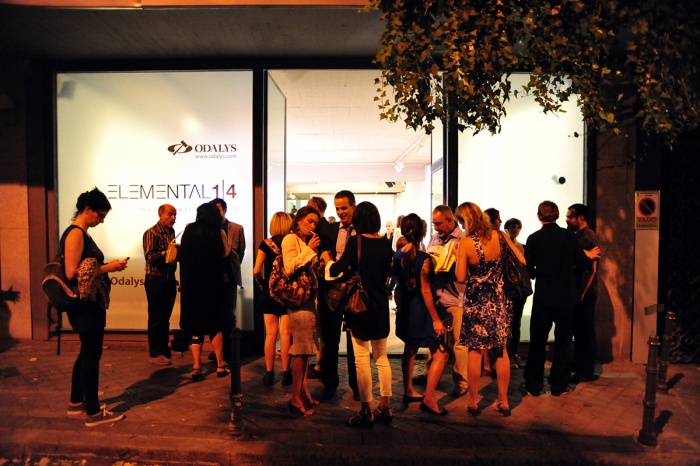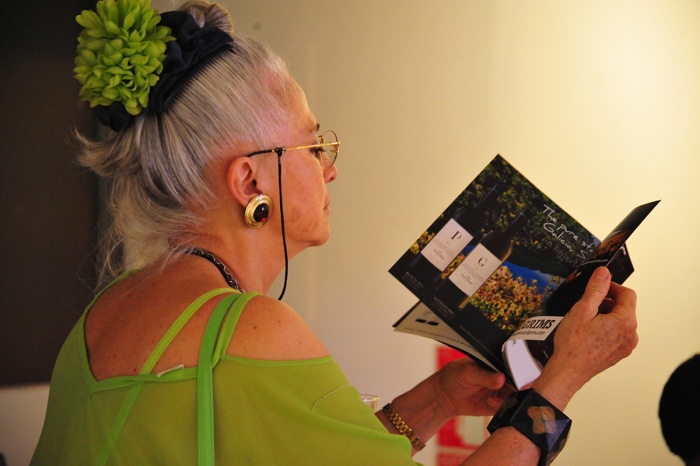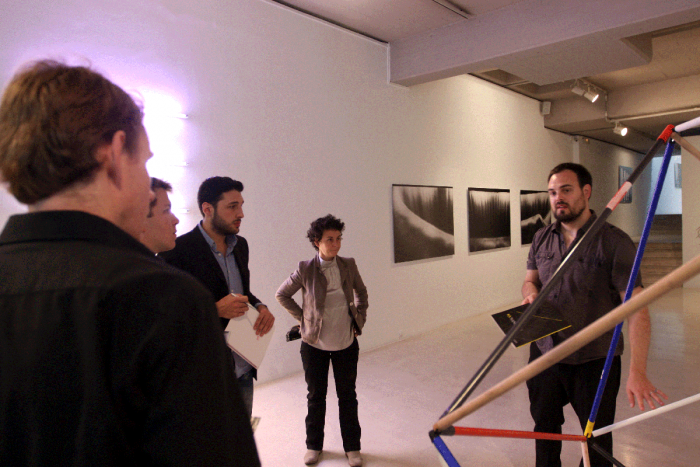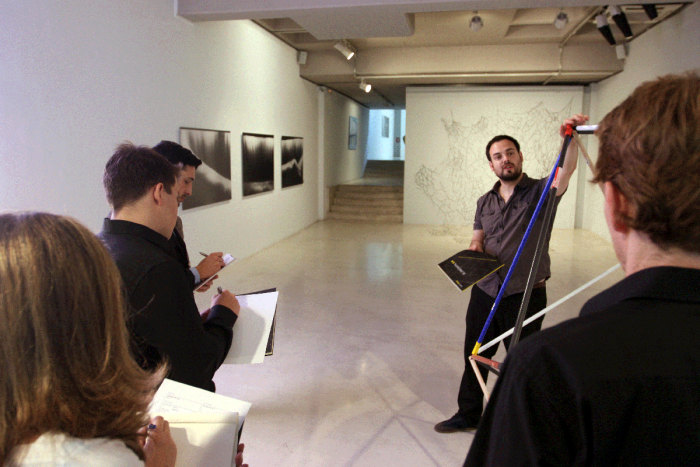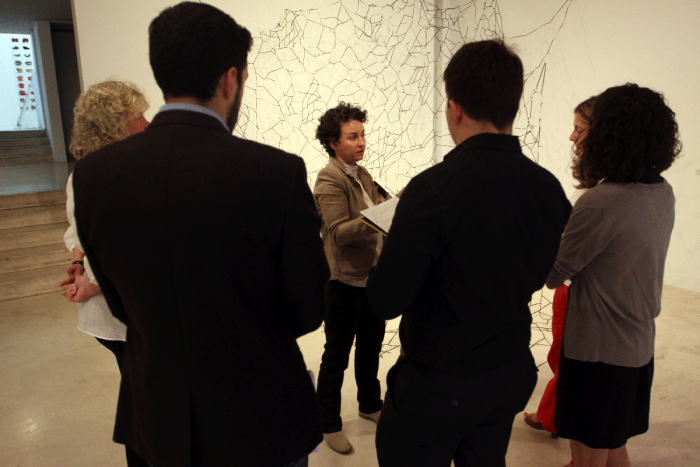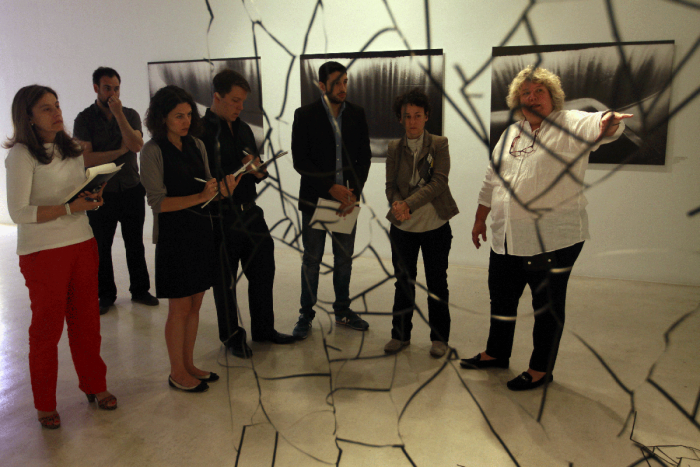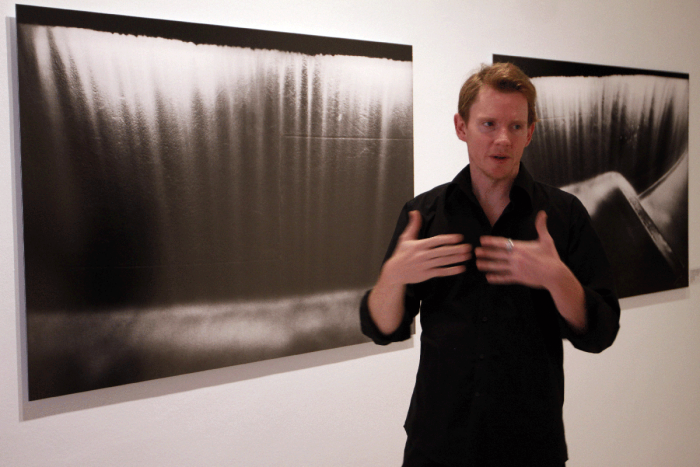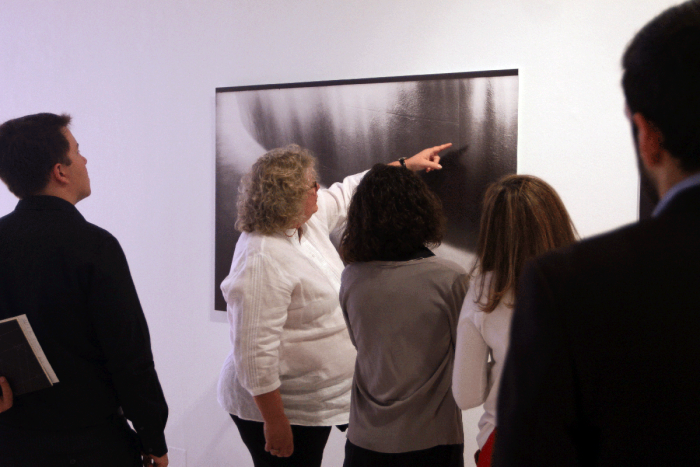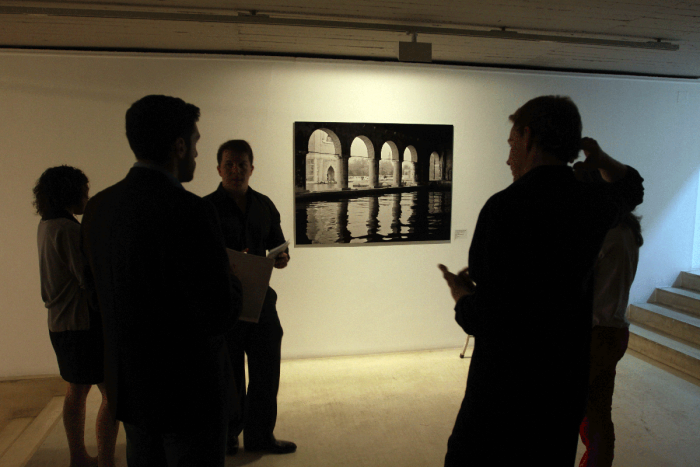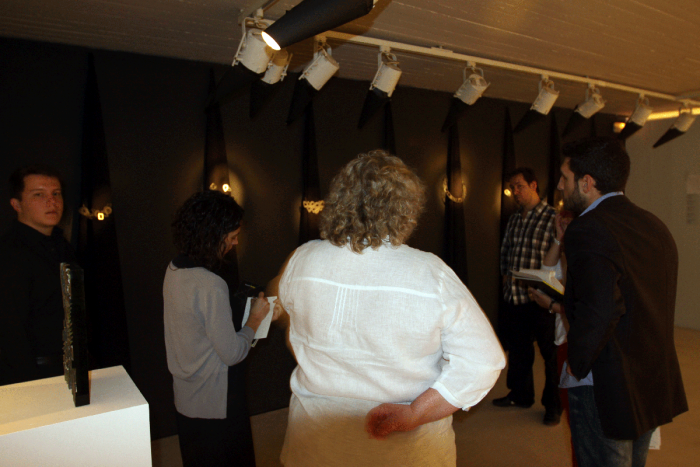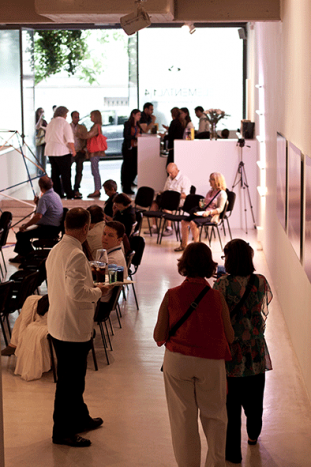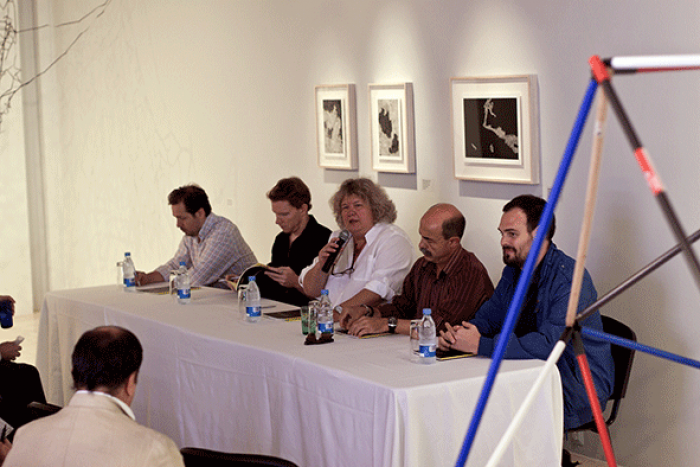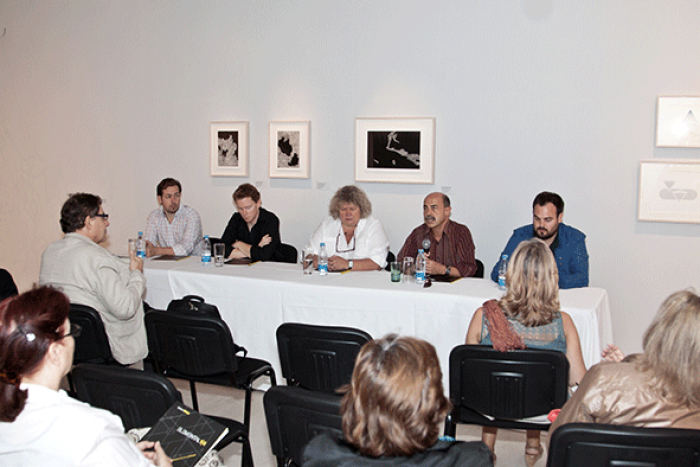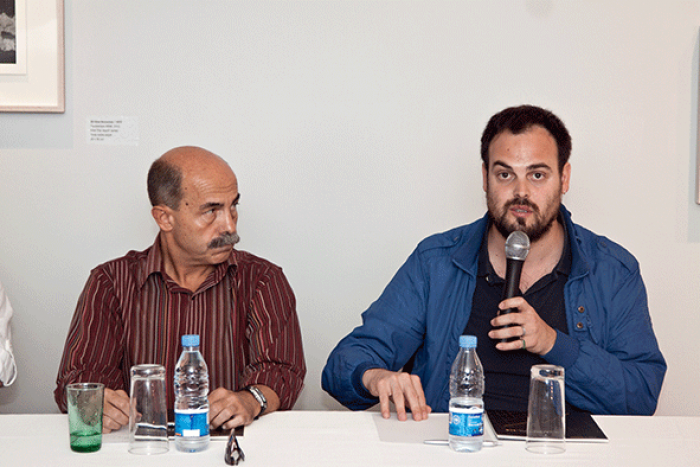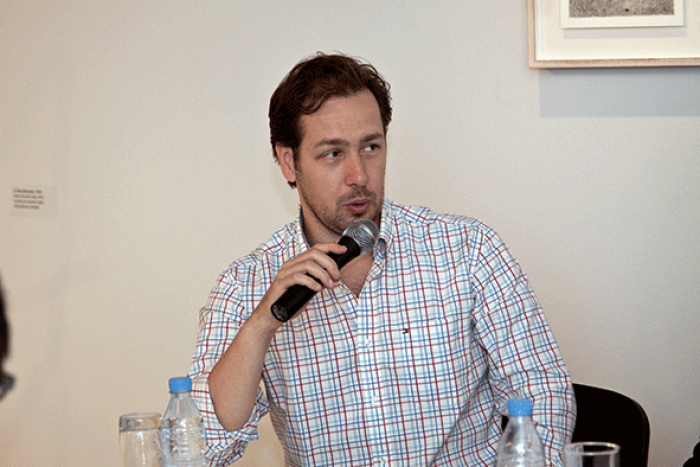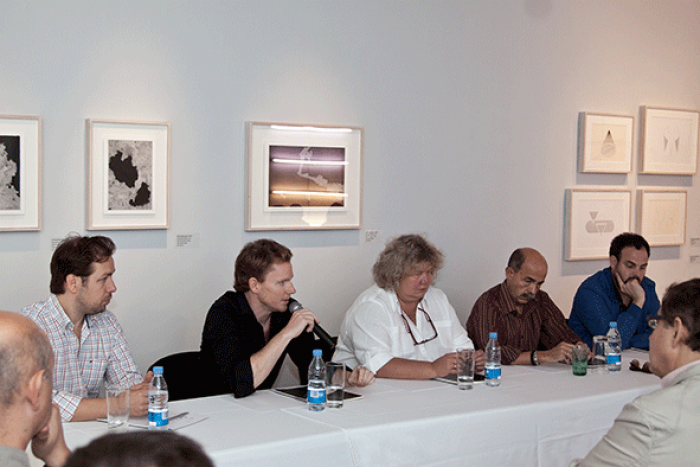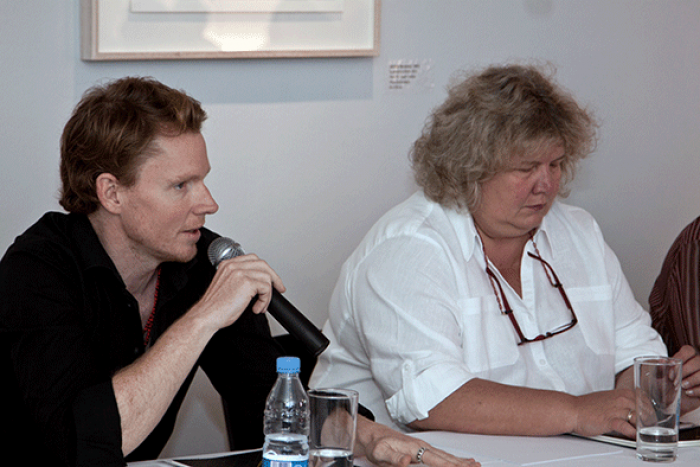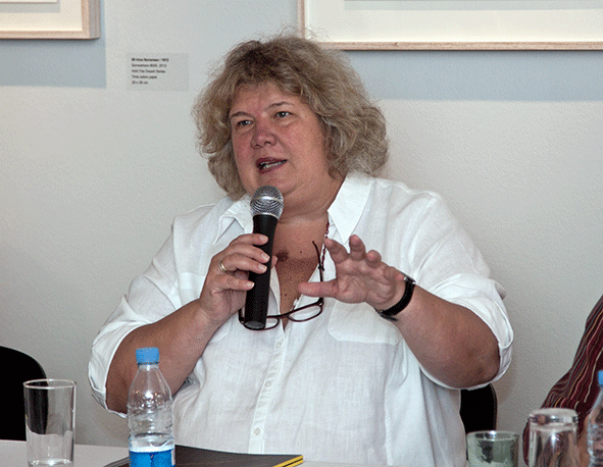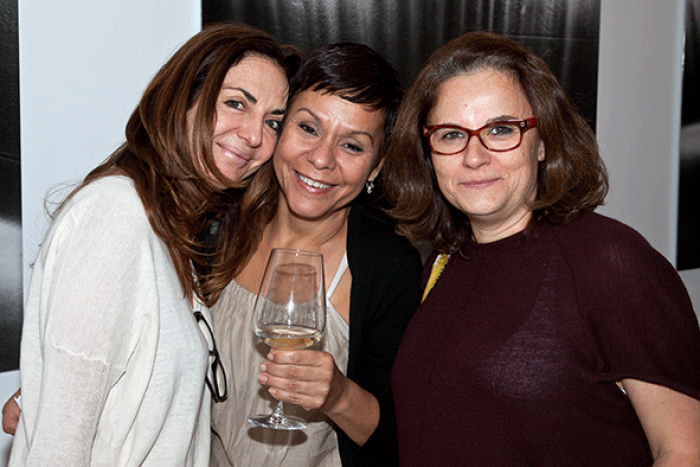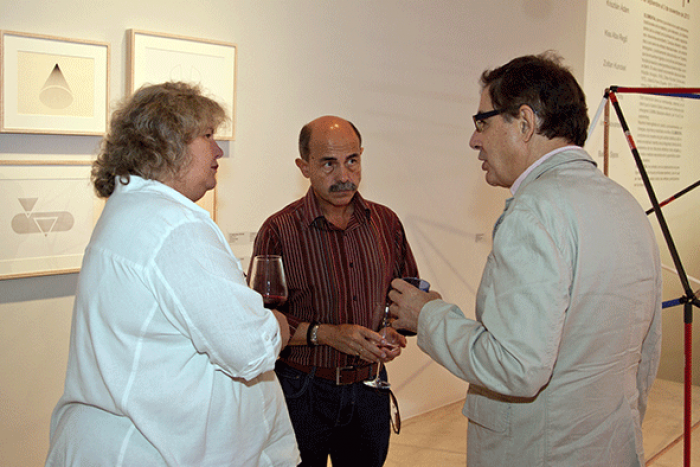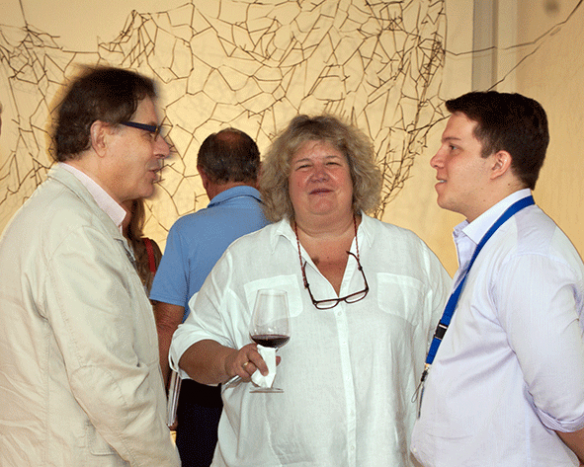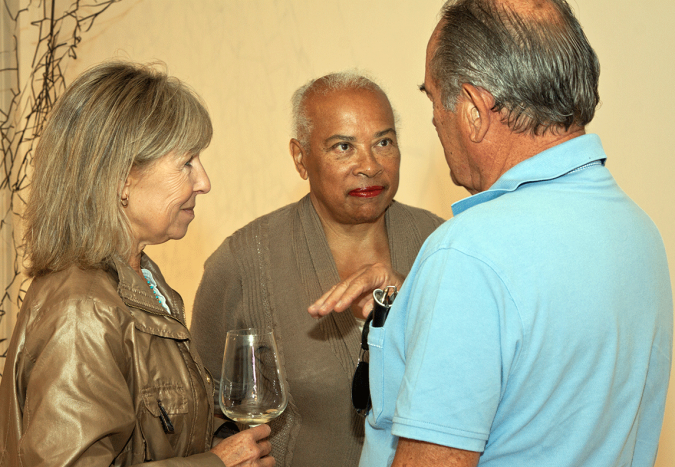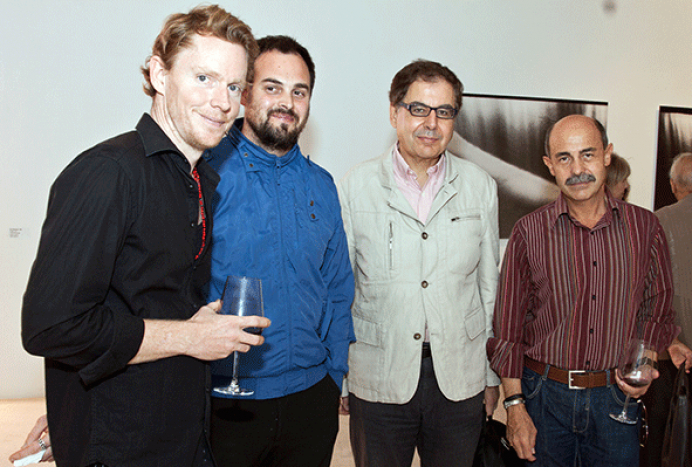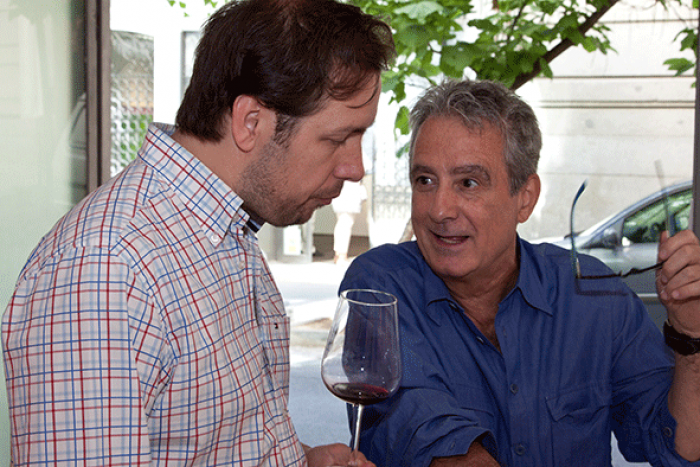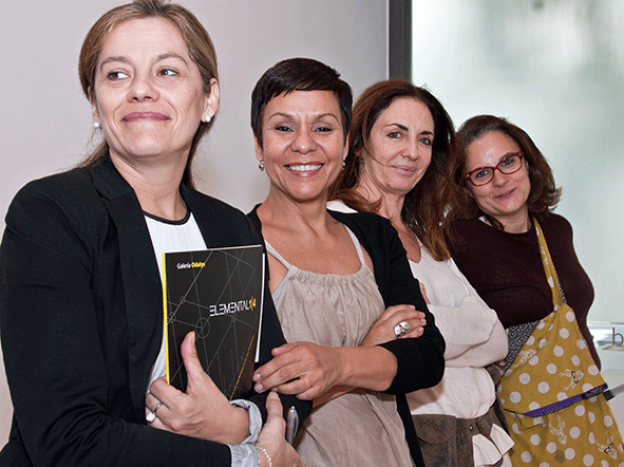Zielort Berlin (Destination Berlin)
Víctor Zarza
Art critic Director of the Department of Painting and Restoration Complutense. University of Madrid
“Je n’aime pas les sédentaires du coeur. Ceux-là qui n’échangent rien ne deviennent rien”
Antoine de Saint Exupéry
Time spent in a particular city can provide an excellent or an anodyne experience as the basis for drawing up criteria to programme a series of collective exhibitions. Or perhaps not. For some years now, approximately since the 1980s, Berlin has been a favourite destination for artists from all over the world, so that it has slowly but inexorably come to rival New York. The city’s unique geo-political position before the fall of the wall, located, as we all know, in the GDR1, led many Germans to leave for the Federal Republic but also attracted a considerable number of foreigners, whose presence would lead to the development of a multicultural community which would constitute a fertile sub-stratum for artistic creation. Because of its exceptional position, even though it was not the capital of Germany from 1945 to 1990, Berlin received generous subsidies from the Federal Republic, with a view to maintaining its status as a great city, attained in the early years of the twentieth century, in socio-economic and political terms and as a leading national and international cultural centre. We should not forget that in the 1980s Berlin was one of the points where the first signs of Neo-expressionism were seen, a movement which would distinguish the plastic arts in Germany and thanks to which it would once again, in this new post-war period, play a leading role on the world art scene2. In this connection we should not underestimate the importance for this resurgence in German art of exhibitions such as Die Neuen Wilden (Aachen, 1980), A New Spirit in Painting (London, 1981) and Zeitgeist (Berlin, 1982), as well as Documenta 7 (curated by Rudi Fuchs, also in 1982).
It should be pointed out that the promotion of art in Berlin has always been exemplary and imaginative, both in the programming of events and the maintenance of infrastructures for the production, distribution and dissemination of art, which has ensured extraordinary vitality in this area3. Academic institutions have played a major role in this dynamism and, in connection with the presence of foreign artists, so has the Berliner Künstler Programm, run by the Deutscher Akademischer Austausch Dienst (German Academic Exchange Service), thanks to which a substantial number of artists from different countries have had the opportunity to live in Berlin4: Carl André, Marina Abramovic, Eduardo Arroyo, Christian Boltanski, Marcel Broodthaers, Daniel Buren, James Lee Byars, Rafael Canogar, Tacita Dean, Rineke Dijkstra, Nan Goldin, Richard Hamilton, Duane Hanson, Mona Hatoum, Arturo Herrera, Damien Hirst, Pierre Huyghe, Alfredo Jaar, Ilya Kabakov, Allan Kaprow, Edward Kienholz, Yannis Kounellis, Shigeko Kubota, André Masson, Mario Merz, Boris Mihailov, Antoni Miralda, Matt Mullican, Roman Opalka, Michelangelo Pistoletto, Pipilotti Rist, Antonio Saura, Allan Sekula, Daniel Spoerri, Francesc Torres, Eulalia Valldosera, Erwin Wurm; musicians of the calibre of John Cage, Alberto Ginastera, Cristóbal Halffter, Igor Stravinsky and Krzystof Penderecki; writers like Carlos Fuentes, Witold Gombrowicz, Peter Handke, Imre Kertész, Susan Sontag and Mario Vargas Llosa; and even film makers: Otar Iosseliani and Jim Jarmusch. Because of what artists find in Berlin (an extraordinary atmosphere of creative energy, a community of concerns and discoveries interwoven with countless sensibilities from all parts of the world, an incomparable range of cultural facilities, a city where past and future intersect dramatically and decisively)5, how it affects their work (influence, inspiration and comparison), and the impact they themselves may have on the Berlin scene, a process of fertile exchange occurs, which is almost impossible to find anywhere else. Unsurprisingly, in many cases the German capital becomes the permanent place of residence for foreign artists.
There is no doubt, then, that Berlin is a good place to go to in search of emerging talent, to discover artists who are as yet not well known and who can enrich the Spanish exhibition scene with an interesting display of what is being produced in one of the leading sites of contemporary artistic creation, in one of the best places to sense something of the zeitgeist that defines the present.
Four of the artists in this first edition of ELEMENTAL (from Spain, Italy, Venezuela and Germany itself) have been students at the prestigious Institut für Kunst im Kontext of the Universität der Künste in Berlin, once again highlighting the role of higher education institutions in the Federal Republic in promoting art and the international recognition earned by this work, thanks to the high academic standards maintained. The remaining three artists, those from Hungary, have links with the Moholy-Nagy M?vészeti Egyetem (Moholy-Nagy University of Art and Design), in Budapest, which is currently involved in joint projects with the Institut für Kunst im Kontext.
As these opening lines have focused on a geographical location, we will turn first to the work of Irina Novarese, who is concerned precisely with territorial issues. Starting with the assumption that the criteria involved in the production of maps are not objective, she seeks in her work to reveal the interestedly conventional nature of cartography, the science that gives us a graphic, and supposedly analogical, interpretation of our planet6; indeed, some of her work has the suggestive title How to lie with maps? Her strategy involves using certain codes drawn from this type of representation (border divisions) to establish a design in the form of a mesh, from which she extracts a structural model on which to base her two- or three-dimensional creations. These can lead us to the idea of a map (in the three-dimensional pieces) or to that of a topographical image on a very small scale (in the two-dimensional works); the correspondence we can perceive between their proportions, which we may see as macro and micro versions, according to the size they suggest, give the whole a plastic coherence, a formal continuity which is very effective for the purposes of her critical discourse.
In her desire to question the universal validity of cartography, Novarese has produced some maps in aluminium whose form is not fixed but varies according to how they are assembled or positioned. Their instability alludes directly to their highly debatable objectivity, as their morphology is as changing as their circumstances may be: an adaptable map is also a manipulable map -the artist seems to be saying-, so the relationship of identity one would expect between it and the territory it represents is clearly questionable. Similarly, the lack of precise information in her otherwise very elaborate drawings with a topographical slant (which we see on the other hand as offering a great deal of information, in view of the accumulation of graphic data they contain) brings us face to face with the lack of specific detail to which we might be led by an exhaustive system of records along the lines proposed by Larry Sultan and Mike Mandel in their fascinating project Evidence (1977).
It could be said that, as a pattern for plastic construction, the mesh has now come to replace the grid, which was an identifying feature of modern art in the avant-garde period, according to Rosalind Krauss (Retículas, 1978). While the grid was a structure via which it became possible to abandon dependence on visual reality (opening up the path to abstraction), the mesh appears as a tool to which any reality can be subjected so as to reproduce it faithfully, as we can see in 3D digital scanners. Functionally it is very closely linked to the idea of a network, another of the models with which human beings have been able to synthesise multiple complex ideas schematically and with a wide range of possible associations. For many artists they have become a support for the visualisation of complex patterns of feeling or ideas, from the psychogeography of the situationists to Mark Lombardi’s diagrams analysing political themes.
Another vision of reality is presented by Zoltan Kunckel, who seeks the key to forms from a phenomenological perspective. In spite of the first impression his images may give us, the artist’s interest goes beyond photography, which only serves him as a medium to investigate the processes by which reality becomes visible according to its illumination and may as well become unreal when lighting conditions change. This search has also featured in some of his sculptures, where our perception of the formal development depends not only on their geometric structure in itself but also on the visual effects derived from reflection, because of the material used (steel). This is in line with the experiments conducted by Laszlo Moholy-Nagy (especially with the Licht-Raum-Modulator) and, later, the work of those who inherited some of his concerns in this field, the kinetic artists, among whom his compatriot Jesús Rafael Soto is a leading figure.
If we look at Arsenal, we can see clearly that his intentions go beyond what would merely be the documentation of a specific place, its architecture or atmosphere, and what he seeks to do is record the essential state of what we perceive visually. This is an inductive approach, we could say, in which the appearance of any element acquires an absolute (aesthetic or structural) validity. Unlike James Casebere, for example, whose images bear some similarity to his work, albeit superficially, Kunckel approaches reality with no other mediating elements than his camera and his own sensitivity7 to capture the right moment (not in a temporal sense - the instant décisif - but to record the phenomenon), as we can also see in the VIZ triptych. This method produces an estrangement which, apart from questioning our visual habits and the principle of certainty we still associate with photography today, inserts those realities (making them unreal, as we have said) in a setting of evocation and mystery, as happens with the enigmatic panoramas by Aitor Ortiz, who is, however, mainly interested in the metaphysics of space in itself8.
Light is also the central concern of Hungarian artist Kiss Abba Reg?, although he gives great importance to its chromatic qualities when it passes through coloured glass. Like Kunckel, he is concerned with the phenomenal and his sculptures combine the morphological factor (clean, basic forms) with chromatic qualities, the two becoming inseparable in the configuration of his pieces. However, while Kunckel is mainly interested in how light is reflected (how it strikes objects and defines them), for Reg? its importance lies in the way in which it colours his sculptures because of their transparency, becoming a virtual component of them. This means that colour is not an adjective in his work, but is a substantial constituent. Some of his pieces recall the characteristic tints used by Paul Klee (inspired by the tones he had discovered during his journeys to Tunisia and Egypt) to modulate colours in numerous different shades, in order to achieve harmonic values with expressive properties.
Returning to the relationship between his work and that of Kunckel, the exhibition includes a surprising interpretation of Cisterna. It is a three-dimensional articulated structure using glass squares, which we can immediately identify with the format of a digital screen, as it consists of small cubes which resemble pixels. This unexpected encounter brings together the coldness of the (implicit) technological medium and the warmth of glass to produce a very attractive effect. The systematic construction, in the form of a grid, leads to a distinctive approach to sculpture, which we could define as “additive”. Instead of detracting from its aesthetic value, it enhances it, giving it a certain process-based character (the procedure remains visible and is an integral part of the result), which is very pertinent to contemporary artistic practices.
Balázs Sipos, for his part, uses the transparency of glass with a clearly symbolic intention: details which normally remain hidden are made visible (this has nothing to do with the stylistic approach we have just commented on). In this way he makes the interiors of his creations an integral part of their structure, incorporating (visually) what would otherwise be a simple matter of presumption or a logical consequence. The fact that his pieces are also “practicable” (they can be manipulated and relocated) undoubtedly helps to emphasise the fatality underlying them: their very mobility makes them comparable to a cyclic story, to the inevitability of mythological condemnations. In connection with the psychological slant one might detect in his work, we should not forget that in ancient Greek myths Sigmund Freud discovered schemes to identify some of the darkest areas of the subconscious. Without going too deeply into such considerations, we may add that the appearance of his figures, the material used and the format in which they are presented suggest a tentative fetishisation, turning them into bibelots which hover between desire and condemnation.
It is perhaps for this reason that the material combinations and chaotic situations presented recall the iconography of bestiaries, those treatises that for generations were a receptacle for humanity’s most arcane fears, the result of ignorance and the terror men experienced in the face of a natural world they did not dominate, one which remained opaque and unfathomable to their minds. As Goya said in the title of one of his Caprichos: “The Sleep of Reason Produces Monsters”. Sometimes, as we are well aware, only paradoxes, what appears to be meaningless or fantastic, so much a part of story telling and poetry, are able to express and give form to all that we find ineffable.
The stylised appearance of the statuettes by Sipos falls between the introspection of an artist like Balthus and the delicate simplification of an oriental print; between the minute aberrations of Bosch (grillorum inventor)9 and the eloquent, magical and/or costumbrista schematicism of pre-Columbian art, so ironically used today by Nadín Ospina, as an element of criticism directed at the standards of cultural colonialism; and between the sparse metamorphic graphics of Fernando Renes and the perverse tiny figures of Marcel Dzama.
I think it would not be incorrect to refer to Ádám Krisztián’s work as design, provided that we do not limit this category to applied art - not even if we are tempted to ascribe it to a supposedly elevated concept of design. I think it is relevant to view it in this way, since from this perspective it may be possible to consider its aesthetic value more appropriately. We do not run the risk of falsifying the merit of his pieces, transferring them to a medium which is, stricto sensu, foreign to them and obscuring what is essential, i.e. falsifying their meaning.
Looking at this artist’s jewellery, we immediately have the impression that we are viewing a type of design that does not comply with the orthodox dictates of ergonomics; we may well suspect that it would be difficult to put it on and wear it comfortably. This raises questions about the reason for something which should only have been conceived to be used, a purpose which seems to be contradicted to some extent. This collection of jewellery thus calls for a more profound examination than jewellery which is purely ornamental or utilitarian. It is precisely in this margin of incoherence that much of its interest lies, as work which can be appreciated artistically. Going beyond what would be a strictly formal evaluation (though from this point of view we can say they are extraordinary) it is interesting to focus on the extent to which the pieces are examples of metadesign, a design that is not a hundred percent compliant with its prerequisites, partially transferring its form (elements which relate to the human body, which can be placed on it and suggest a new reading of it) to the realm of pure creation. Having no desire to make unnecessary comparisons, we would nevertheless note that jewellery and fashion conceived by plastic artists are usually, indeed almost always (perhaps because of a simple matter of “fortunate incompetence”), objects which are closer to the world of art than that of design.
Another type of transfer can be seen in the work of Llobet & Pons, the collective formed by Jasmina Llobet and Luis Fernández Pons. In their case we find a minimalism formulated using elements of everyday life (a drinking straw, broomsticks, tables, etc.), subverting their functions (in the best tradition announced by Lautreamont and first manifested in practice in Marcel Duchamp’s ready-mades) and reinstalling the usual meaning of such objects in another dimension, which we have to interpret on an aesthetic plane. The nature of their work recalls the unprecedented subversion of minimalism by those artists who were part of the tendency known at the time as “anti-form” or “eccentric abstraction” (including Eva Hesse, Bruce Nauman and Louise Bourgeois); in a certain sense they went beyond it because the condition of the materials used (their connotations) and their specific properties (fragility, texture, instability etc.) played an important role, as they provided the substance needed to activate this type of “re-formulation”, the encounter between different formal effects10, which has much in common with what we find in the work of these two artists.
However, unlike those artists, Llobet & Pons seek to establish a critical discourse based on humour with their extraordinary material and geometric disparities. Here the paradox is not intended to illuminate dark corners of our existence, but to play with the environment and our reason, parodying both the constructions of logic and the utility of everyday objects. An icosahedron constructed with broomsticks has an undeniable ironic flavour, questioning, or at least relativising, the aura we associate with works of art and to which many artists subscribe today. This is an operation which, far from reducing the interest of these works, generates a kind of dialectic that extends the limits of our concept of what we are prepared to accept as art. Indeed, this is nothing new. Since the earliest days of modern art it has been subjected to a process of constant redefinition, allowing us to situate what these two artists do precisely in that problematic area where the conflict that is inherent to contemporary art occurs.
In the work of the German artist Uli Westphal there is no doubt also a certain sense of paradox, although of a very different kind, as it is organisational (in a broad sense) rather than merely conceptual. Initially his interest appears to focus on photographically recording the appearance of a series of vegetables with strange mutations. The close-up pictures are presented in a style which is almost scientific, recalling the magnificent collection of plants assembled by Karl Blossfeldt for educational purposes. As a result of the minute resolution, they present a somewhat “rarified” image, because of the abundant visual detail they include. Although in Westphal’s case the subject is always presented integrally, he shares Blossfeldt’s desire to capture the singularity and beauty of what he photographs and his fondness for system, as a principle of order and a method of work11. His images fit easily into the objective trend which predominates in German photography today.
But his project goes further than generating a catalogue of the vegetables in question. First, we should note that he usually mounts the photos in a serial structure, which inevitably affects our perception of the whole and of each individual item. The result is a compound image which, because of its extent, invites us to follow a perceptive route. Only occasionally does one focus on one particular example, as the overwhelming sensation is that of the whole. Here, then, we see the paradox we referred to before: all the information provided by the photographs is subjected to the overall impression (and absorbed by it to a certain extent), which is ultimately that generated by a large rectangle hanging on the wall. This process changes the testimonial (informative) content of each image, transforming it into chromatic quality, visual material, an abstract component. Once again this suggests a relationship, albeit a superficial one, with the minimalist approach and, perhaps, more notably with the work of Tony Cragg12.
Shelflife, on the other hand, presents another facet of his production which cannot be dissociated from the scrupulous way in which he photographs nature, his focus on phenomena. While light constitutes an essential element for the visual definition of his mutatoes, on this occasion he is interested in the different types of lighting used in shops to display food and make it look tastier and more attractive; we are moving, then, from light which displays to light which motivates. Like the work described previously it uses a fixed, geometric scheme to present a classification organised by light temperature (the tendency to taxonomy appears again), forming a montage which recalls some pieces by Dan Flavin; the difference between them, however, is that, while the American sought to interact with the environment, modifying the perception of space, like James Turrell, Westphal tries to establish a dialectically ambiguous relationship between the desire to classify, systematisation as a working principle, and structuring in closed orders as a key to presentation.
This exhibition consists of two parts: the exhibition in the gallery itself and the works of Irina Novarese and Llobet & Pons which will be on show at the gallery’s stand in SUMMA, an event aimed at collectors interested in the latest artistic developments. Overall, it offers an attractive combination of works which are relatively heterogeneous and which, from the conceptual and strategic viewpoints, fit perfectly into contemporary practice. The names of most of these artists are not well known in this country and this is by no means accidental, as the discovery and promotion of emerging artists occupies an important place in this gallery’s activities and is fundamental to the aims of the Odalys Foundation, which include the creation of a programme of grants and placements for the training of artists abroad. This edition of ELEMENTAL will be followed by four others (they are currently planned for Caracas, Madrid and Berlin), devoted to a selection of artists who fit into this category and are linked in some way to Berlin, that dynamic focus of contemporary creative work.
1. For Wim Wenders, director of Der Himmel über Berlin (Wings of Desire, 1987) “no other city is so symbolic and at the same time a place of survival”; in Wim Wenders. XXII Muestra Cinematográfica del Atlántico, Cadiz, 1991; pp.51-2.
2. “The first attempts to recover or introduce references to their own situation appeared in a generation of Berlin-based artists: Georg Baselitz, Karl Horst Hödicke and Bernd Koberling, who, turning away from abstraction and the foreign influence of pop art, American minimalism and post-minimalism, incorporated figurative elements in their work, developing art that was more expressionist in inspiration and thus closer to what is seen as the German tradition, but without renouncing modern approaches” Guasch, Anna María: El arte último del siglo XX. Del posminimalismo a lo multicultural; Alianza, Madrid, 2002; pp.243-4.
3. “The low price of accommodation and studios and a reasonable cost of living, combined with a historically, culturally and dialectically changing city, offer ideal conditions for an advantageous scenario” Gisbourne, Mark: Berlin Art now; Thames and Hudson, Londres, 2006; p 8.
4. “Many of these artists have produced art with very direct impressions (of Berlin), helping us to understand the city and what it means to live there” Mc Shine, Kynaston, et al.: Berlinart 1961-1987; The MOMA/Prestel, New York/Munich, 1988; p.19.
5. “In a city which often loses itself between memories of the past and plans for the future, the anticipation and reflection of artists resident in Berlin seems to offer, in a very productive way, a suitable path for dealing with the present” Gisbourne, M.; ibid.
6. “There is no objective map, everything depends on the point from which spaces and the world are defined, because, in spite of everything, the way in which the map is produced and read is conditioned by the history behind the hand that draws it and the vision that reads it and interprets it” De Diego, Estrella: Contra el mapa. Disturbios en la geografía colonial de Occidente; Siruela, Madrid, 2008; p.15.
7. As we know, James Casebere and Thomas Demand, for example, use models to construct their concepts. Part of their projects thus corresponds to a stage which we may describe as pre-photography.
8. “... the place as a metaphysical concept. Not a specific place, or a recognisable building, but the place as a space occupied solely by the structure that has been created”. Olivares, Rosa: 100 fotógrafos españoles; Exit, Madrid, 2005; p.294.
9. Gombrich, Ernst H.: El legado de Apeles; Alianza, Madrid, 1982; p.164.
10. “Eccentric abstraction argued for the reconciliation of different formal effects, without making them arbitrary and without turning to literary or metaphorical associations to express them”. Guasch, A.M.: op.cit.; p.30.
11. “Blossfeldt’s strict vision was quickly recognised as a typical example of observation of nature focusing on basic forms and structures, and in this sense it was pioneering work for many photographers. It was no longer a question of romanticism but systematic study; no longer desire but analysis” Hans Michael Koetzle; in Rubio, Oliva Mª/ Koetzle, H.M.: Momentos estelares. La fotografía en el siglo XX; Círculo de Bellas Artes, Madrid, 2007; p.88.
12. “Reality can hardly keep up with its marketing image. The need to know both objectively and subjectively more about the subtle fragile relationships between us, objects, images and essential natural processes and conditions is becoming critical.” Tony Cragg (1989), in Fineberg, Jonathan: “Art since 1940. Strategies of Being” Lawrence King, London, 2000; p.445.
Orfila 5, 28010, Madrid. Spain
September 19th 2013 to November 3rd 2013


